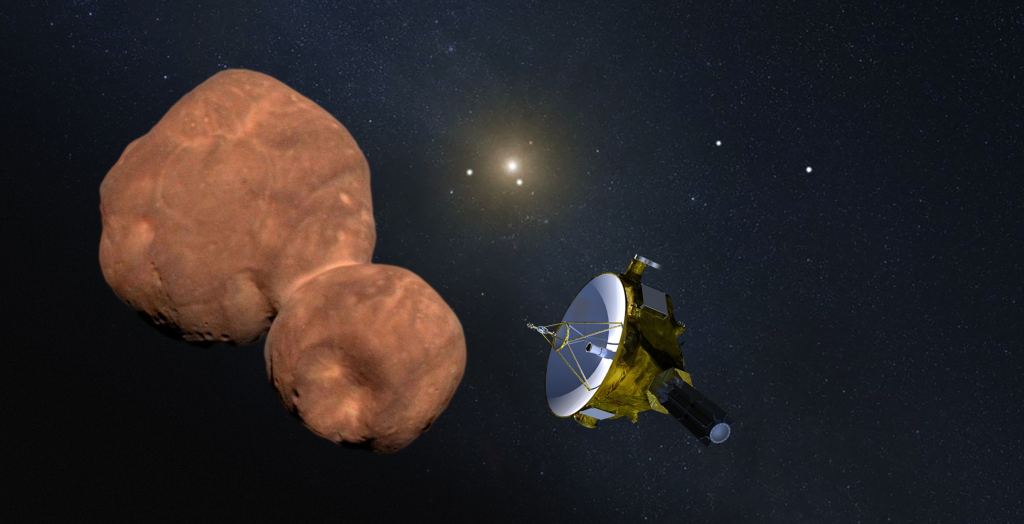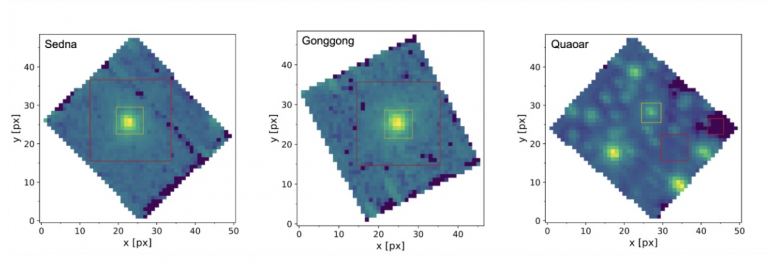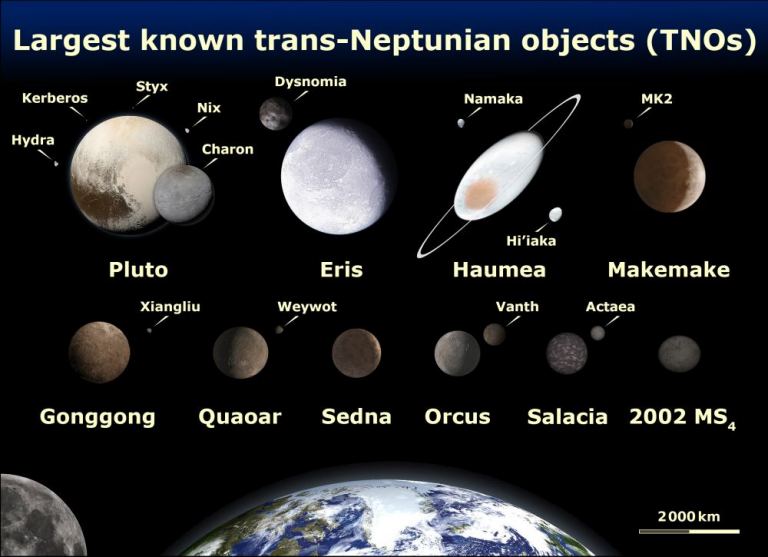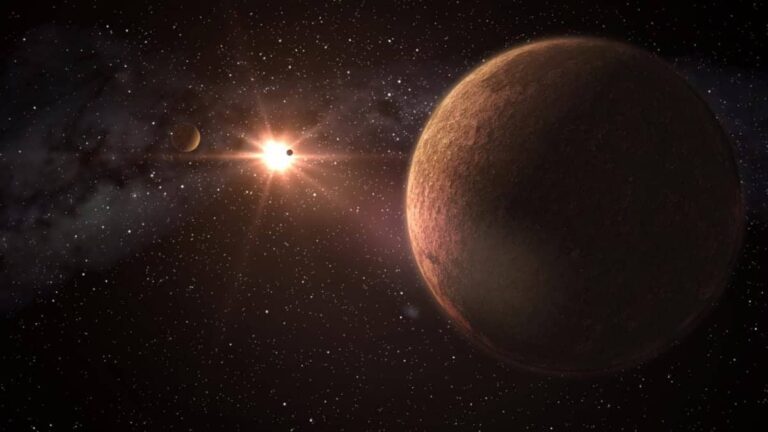Observations of the Kuiper Belt by JWST: Sedna, Gonggong, and Quaoar
Exploring the Kuiper Belt, an Extensive Solar System Region Filled with Innumerable Icy Bodies, Unveils Scientific Insights of Great Worth. The examination and classification of Kuiper Belt Objects (KBOs), also known as Trans-Neptunian Objects (TNOs), have revolutionized our comprehension of the Solar System’s history. The arrangement of KBOs serves as an indicator of gravitational forces that have molded the Solar System, unearthing a dynamic narrative of planetary migrations. Since the late 20th century, scientists have eagerly sought a closer look at KBOs to gain deeper insights into their orbits and composition.
Studying celestial bodies in the outer reaches of the Solar System stands as one of the prime missions of the James Webb Space Telescope (JWST). Utilizing data collected by Webb’s Near-Infrared Spectrometer (NIRSpec), an international team of astronomers conducted observations on three dwarf planets situated within the Kuiper Belt: Sedna, Gonggong, and Quaoar. These observations unveiled various intriguing aspects of their respective orbital characteristics and composition, including the presence of light hydrocarbons and intricate organic compounds thought to result from methane exposure.
The study, spearheaded by Joshua Emery, an Associate Professor of Astronomy and Planetary Sciences at Northern Arizona University, enlisted the expertise of researchers from institutions such as NASA’s Goddard Space Flight Center (GSFC), Institut d’Astrophysique Spatiale (Université Paris-Saclay), Pinhead Institute, Florida Space Institute (University of Central Florida), Lowell Observatory, Southwest Research Institute (SwRI), Space Telescope Science Institute (STScI), American University, and Cornell University. A preprint of their research paper has been made available online and is currently under review for potential publication in Icarus.

Despite the considerable advancements in astronomy and robotic exploration, our understanding of the Trans-Neptunian Region and the Kuiper Belt remains quite limited. Up to this point, the Voyager 2 mission, which conducted flybys of Uranus and Neptune in 1986 and 1989, was the sole mission to study these ice giants and their primary moons. Furthermore, the New Horizons mission was the pioneering spacecraft to investigate Pluto and its moons during its historic July 2015 encounter, and it also stands as the only mission to have reached an object within the Kuiper Belt. This milestone was achieved on January 1st, 2019, as New Horizons passed by the Kuiper Belt Object (KBO) known as Arrokoth.
This disparity in exploration efforts underscores why astronomers have been eagerly anticipating the launch of the James Webb Space Telescope (JWST). In addition to its primary mission of studying exoplanets and the earliest galaxies in the Universe, the telescope’s robust infrared imaging capabilities have been directed towards our own celestial neighborhood, resulting in fresh images of Mars, Jupiter, and its largest moons.
For their research, Emery and his team utilized near-infrared data collected by the Webb telescope to examine three planetoids in the Kuiper Belt: Sedna, Gonggong, and Quaoar. These objects are approximately 1,000 kilometers (620 miles) in diameter, placing them within the International Astronomical Union’s (IAU) classification of Dwarf Planets.
Emery conveyed via email to Universe Today that these bodies hold particular fascination for astronomers due to their dimensions, orbital characteristics, and compositions. Unlike other Trans-Neptunian objects such as Pluto, Eris, Haumea, and Makemake, which have all preserved volatile ices on their surfaces (nitrogen, methane, etc.), Sedna, Gonggong, and Quaoar may exhibit similar volatile ices on their surfaces. As Emery explained, while these objects share similar sizes, their orbital paths differ significantly. Sedna, for instance, resides as an inner Oort Cloud object with a perihelion of 76 astronomical units (AU) and an aphelion of nearly 1,000 AU. Gonggong follows a highly elliptical orbit with a perihelion of 33 AU and an aphelion of about 100 AU, while Quaoar travels along a relatively circular orbit at approximately 43 AU. These unique orbits position these bodies in various temperature regimes and radiation environments, with Sedna, in particular, spending a significant portion of its orbit outside the Sun’s heliosphere. The researchers sought to investigate how these diverse orbital conditions could affect the surface properties of these objects, including the presence of other intriguing ices and complex organic compounds.

Employing data obtained from Webb’s NIRSpec instrument, the research team conducted observations of all three celestial bodies using low-resolution prism mode, encompassing wavelengths ranging from 0.7 to 5.2 micrometers (µm), effectively situating them within the near-infrared spectrum. Furthermore, they performed supplementary observations of Quaoar, spanning from 0.97 to 3.16 ?m, utilizing medium-resolution gratings with a spectral resolution ten times greater. The resultant spectra unveiled intriguing details about these Trans-Neptunian Objects (TNOs) and their surface compositions, as explained by Emery:
“We detected the presence of abundant ethane (C2H6) on all three bodies, with the most pronounced concentration found on Sedna. Additionally, Sedna exhibits traces of acetylene (C2H2) and ethylene (C2H4). The distribution of these molecules corresponds to the orbital characteristics of each body, with the highest concentrations on Sedna, lesser amounts on Gonggong, and the lowest levels on Quaoar. This alignment aligns with the varying temperatures and irradiation conditions experienced by these TNOs. Notably, these molecules represent direct byproducts of methane (CH4) irradiation. Had ethane, or the other compounds, been present on the surfaces for an extended period, they would have undergone further transformations into more intricate molecules due to irradiation. The persistence of these molecules suggests that methane (CH4) must be regularly replenished on their surfaces.”
These findings align with research outcomes from a pair of recent studies helmed by Dr. Will Grundy, an astronomer affiliated with the Lowell Observatory and a co-investigator on NASA’s New Horizons mission, as well as Chris Glein, a planetary scientist and geochemist at the Southwest Research Institute (SwRI). In both of these studies, Grundy, Glein, and their team conducted assessments of deuterium/hydrogen (D/H) ratios within methane on Eris and Makemake. Their conclusions pointed to the methane not having a primordial origin but instead undergoing processing within the interiors of these celestial bodies and subsequently manifesting on the surface.
“We propose that a similar scenario may apply to Sedna, Gonggong, and Quaoar,” remarked Emery. “Furthermore, our observations reveal that the spectral characteristics of Sedna, Gonggong, and Quaoar differ from those of smaller Kuiper Belt Objects (KBOs). Recent discussions at two scientific conferences featured JWST data indicating that smaller KBOs tend to segregate into three distinct groupings, none of which resemble the spectral patterns of Sedna, Gonggong, and Quaoar. This outcome corroborates the notion that these three larger bodies have experienced a distinct geothermal history compared to their smaller counterparts.”

These findings hold significant implications for the study of objects within the Kuiper Belt (KBOs), Trans-Neptunian Objects (TNOs), and other celestial bodies in the outer reaches of the Solar System. They offer fresh insights into the formation of objects located beyond the Frost Line in planetary systems, which designates the boundary beyond which volatile compounds solidify. In our Solar System, the Trans-Neptunian region aligns with the nitrogen line, where celestial bodies preserve substantial quantities of volatiles characterized by exceedingly low freezing points (such as nitrogen, methane, and ammonia). Emery emphasized that these findings also shed light on the kinds of evolutionary processes operating in this specific region:
“The most significant implication may revolve around determining the size at which KBOs reach temperatures sufficient for internal reprocessing of primordial ices, potentially even undergoing differentiation. Furthermore, these spectra will aid in enhancing our understanding of the irradiation-induced transformations affecting surface ices in the outer Solar System. Future investigations can delve into volatile stability and the potential presence of atmospheres on these bodies throughout their orbital paths.”
The results of this study underscore the remarkable capabilities of the James Webb Space Telescope (JWST), which has proven its mettle numerous times since commencing operations early last year. They also serve as a reminder that, in addition to facilitating pioneering insights into distant planets, galaxies, and the grand-scale structure of the Universe, the JWST has the capacity to unveil secrets within our immediate cosmic vicinity.
Emery further attested to the value of JWST’s data, stating, “The JWST data are truly exceptional. They enabled us to acquire spectra in wavelength ranges that were previously inaccessible from the ground, which permitted the identification of these ices. Often, when conducting observations in a new wavelength range, initial data quality may be subpar. However, the JWST not only extended the scope to encompass a new wavelength range but also furnished extraordinarily high-quality data that are sensitive to a wide array of materials present on the surfaces of celestial bodies in the outer Solar System.”
Further Reading: arXiv
This article is republished from UniverseToday under a Creative Commons license. Read the original article.
Do not forget to share your opinion with us to provide you with the best posts !




0 Comments